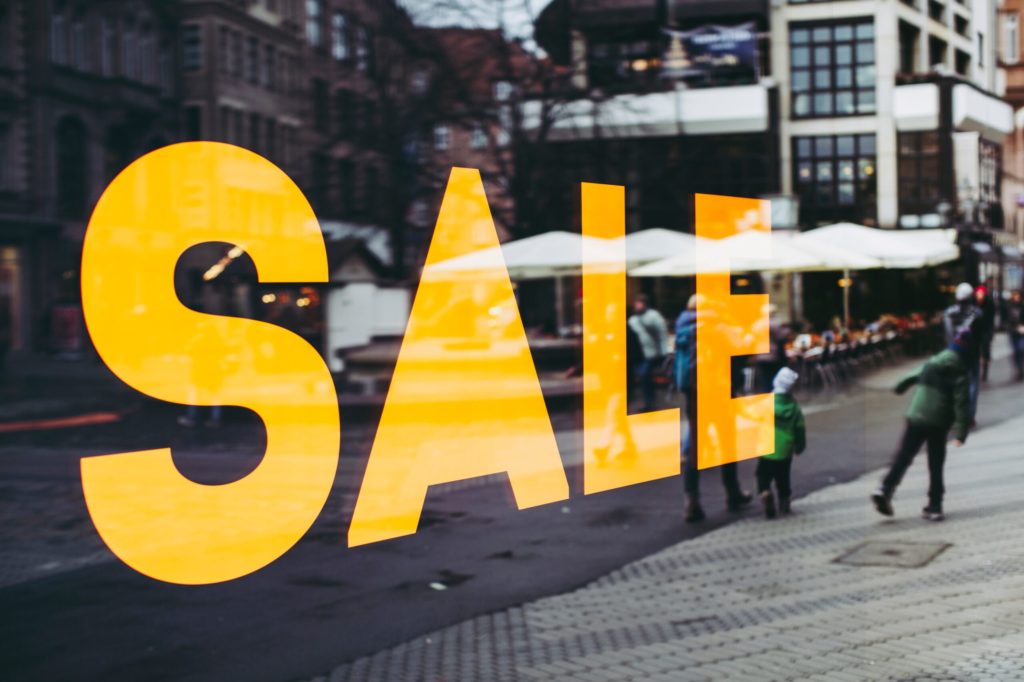By Simon Dale, Strategic Account Director at Organic
For nearly all brands, Black Friday is a well-known and well planned-for date in the calendar. The event is now bigger than ever. What began as a single-day, in-store sale in America on the day after Thanksgiving, has snowballed into a global retail milestone, with offers spanning nearly a week before and after the last Friday in November. It’s less Black Friday and more Black Five Days (at least!). For most consumers, it is one of most anticipated sales events of the year. But what impact will the effects of COVID-19 and lockdown have on the day this year?
Previous years
Whilst Black Friday has been recognised in the US since the 1950s, the origins of Black Friday in the United Kingdom are somewhat different. Amazon introduced Black Friday offers to their UK customers in 2010, but it wasn’t until 2013 when Walmart-owned Asda took part that it really started to take off. In 2014, many big retailers began to introduce their own Black Friday offers and the scale of the sales have grown year-on-year.
Looking back at the last 12 years, it’s evident that the spike in online sales during November has increased significantly. In 2010, 9% of total sales happened online, compared to 2019 when 22% of all sales were online transactions. This steady growth has been helped by more brands offering Black Friday deals, as well as consumers enjoyment for getting a deal!
With Christmas looming, we’d normally expect to see a slight increase in online sales from November. However, as we’re all aware, this year is far from normal. With new and varied lockdown measures in place, resulting in the closure of non-essential physical retail stores for the majority of November, in the UK at least, we’ll likely be seeing a very different figure following 2020’s Black Friday’s digital sales.
Trends for 2020
There have been significant spikes in online sales following the beginning of the COVID-19 pandemic. Data from the lockdown months of April to July show a huge jump in online sales due to the high street being closed. In fact, in 2019, online sales made up 18-19% of total sales between April and July, but in 2020 it ranged from 28-33% for the same period. A huge boost.
Prior to the recently announced second lockdown, the stats for Black Friday would have likely reflected the fact some people were happily shopping in bricks-and-mortar stores again and we could expect online sales to be closer to 30% of all sales (a huge YOY increase). However, with the new restrictions in place, this is now likely to be much higher.
When looking at sales YOY (2019 – 2020) during lockdown we saw spikes of up to a 72% increase in online sales. These spikes started in April but continued to grow as we moved into June and through to August. This shows that many people had to adjust to a new way of shopping in the first few weeks of lockdown but continued with these new habits even after bricks-and-mortar stores had reopened.
When it comes to the types of products people usually purchase during Black Friday, whether it’s tech or toys, it’s worth noting that they tend to be items that are less likely to be available in shops deemed ‘essential’ by the government. For Black Friday 2020, the desire for a bargain will not go away. Customers want a deal and many will rely on the considerable discounts when ticking things off their Christmas shopping lists. This will cause massive shifts in offline versus online market share. When we look at YOY growth, although we don’t expect to see the same spikes of 70% YOY online retail share growth as earlier in the year, big YOY increases of +50% should not come as a surprise.
If we drill down and compare the day itself to previous years, it’s apparent that retailers who have chosen to spread offers over a longer period of time may not have the same expected sales growth on the day, as consumers are likely to have found the deal they were after earlier in the promotion. This tactic, however, could result in a better performing Black Friday landing page on the day, whereby retailers are able to release the bigger, more enticing offers on that day.
How will this change the way we shop?
With all the changes we have experienced this year, there will be inevitable knock-on effects when it comes to how we shop and the types of gifts we purchase.
An online-only Christmas shopping experience will change the way consumers and marketers look at the peak selling period from November to January, and therefore the entire year going forward. The offers we expect to see and the way items are marketed to us will all have a vast impact on our shopping habits moving forwards, and the brands that rely on the high street will need to innovate regarding how they get our attention online.
For retailers who relied on the high street, there are two choices: evolution or extinction. And if those businesses who have depended on the high street decide to enter the digital world in a bigger way, it will have an impact on the e-commerce marketplace, with more big brands fighting for the same share.
From the first months of lockdown when essential items and office equipment was purchased, through to a summer where lockdown BBQs were at the top of many consumers’ lists, buying behaviour has been affected more than we could have predicted as a result of the pandemic. As a result, the high street will have to change how it appeals to shoppers, and try to offer something different that we can’t quickly and easily get online.
Whatever happens post-pandemic, consumers have become even more digitally savvy, and brands will need to continue to work harder than ever to keep their attention








